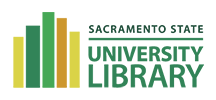Researching contemporary public artists comes with some challenges, especially when those artists are women, LGBTQA+, Black, Indigenous, People of Color, people with disabilities, and/or folks from other marginalized populations. There are two primary reasons for this:
1. In general, the research process takes time and it can be years (even a lifetime) before an artist makes it into academic literature.
2. The academy has traditionally venerated the work of white men from Western European and North American countries over that of other populations.
As arts researchers we have the privilege of producing scholarship that recognizes and honors the significant creative contributions of our diverse human community. However, to do this we must question how "authority" has been defined within the academy.
For the purpose of writing about public artworks from artists with diverse identities and little or no recognition, we can begin by considering their work through a theoretical lens that invites critical discourse. Critical theories provide us with frameworks to question the power structures that allow, for example, statues of Confederate Generals to remain in public spaces but disavow the value of artworks on the sides of public buildings.
To learn more about critical theory and its frameworks, you can begin by looking through material in the University Library collections. You may want to browse the Dictionary of Critical Theory linked below.
Because it can be difficult to find scholarly work discussing contemporary artists or artists from outside dominant culture, we need to look outside the academy for information. Mining the open web for content can be frustrating, so it helps to know what we are looking for when we search Google for information on contemporary public artists:
When we search Google we usually find a glut of information, most of which is not useful. To be sure we are getting the most helpful information, we can choose helpful keywords and use the advanced search features shown above. Some keywords to think about using are:
There are a few things we can do to make sure we get the most useful results in Google using Advanced Search features:
In addition to open web research, we can search the University Library news paper databases:
Includes current and historic full-text articles in text and/or image form as well as full-page views of each issue of the Sacramento Bee.
Coverage: 1857 - today
To access cover-to-cover images of recent issues of the Sacramento Bee daily newspaper in a browsable format click here.
Coverage: November 7, 2017 - today
Provides full-text articles from the San Francisco Chronicle newspaper with local, regional, U.S. and international news.
Paid advertisements and images are excluded.
Coverage 1985 - yesterday
To access cover-to-cover images of the San Francisco Chronicle daily newspaper click here.
Coverage: March 1, 2017 - today
Because we are going to be using open web resources and social media, as well as personal interviews, we are going to have to build our citations from scratch. This can feel like a daunting task, so please don't get too concerned, your Librarian or Professor can help answer any questions. There are rules and variable to all citation styles, so it is only a matter of choosing the best one for your source. Please begin by looking at the Research Guide on Chicago Style Citations or go directly to the Chicago Manual of style in the database list:
